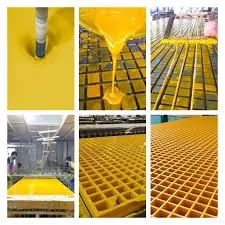
-
 Afrikaans
Afrikaans -
 Albanian
Albanian -
 Amharic
Amharic -
 Arabic
Arabic -
 Armenian
Armenian -
 Azerbaijani
Azerbaijani -
 Basque
Basque -
 Belarusian
Belarusian -
 Bengali
Bengali -
 Bosnian
Bosnian -
 Bulgarian
Bulgarian -
 Catalan
Catalan -
 Cebuano
Cebuano -
 China
China -
 China (Taiwan)
China (Taiwan) -
 Corsican
Corsican -
 Croatian
Croatian -
 Czech
Czech -
 Danish
Danish -
 Dutch
Dutch -
 English
English -
 Esperanto
Esperanto -
 Estonian
Estonian -
 Finnish
Finnish -
 French
French -
 Frisian
Frisian -
 Galician
Galician -
 Georgian
Georgian -
 German
German -
 Greek
Greek -
 Gujarati
Gujarati -
 Haitian Creole
Haitian Creole -
 hausa
hausa -
 hawaiian
hawaiian -
 Hebrew
Hebrew -
 Hindi
Hindi -
 Miao
Miao -
 Hungarian
Hungarian -
 Icelandic
Icelandic -
 igbo
igbo -
 Indonesian
Indonesian -
 irish
irish -
 Italian
Italian -
 Japanese
Japanese -
 Javanese
Javanese -
 Kannada
Kannada -
 kazakh
kazakh -
 Khmer
Khmer -
 Rwandese
Rwandese -
 Korean
Korean -
 Kurdish
Kurdish -
 Kyrgyz
Kyrgyz -
 Lao
Lao -
 Latin
Latin -
 Latvian
Latvian -
 Lithuanian
Lithuanian -
 Luxembourgish
Luxembourgish -
 Macedonian
Macedonian -
 Malgashi
Malgashi -
 Malay
Malay -
 Malayalam
Malayalam -
 Maltese
Maltese -
 Maori
Maori -
 Marathi
Marathi -
 Mongolian
Mongolian -
 Myanmar
Myanmar -
 Nepali
Nepali -
 Norwegian
Norwegian -
 Norwegian
Norwegian -
 Occitan
Occitan -
 Pashto
Pashto -
 Persian
Persian -
 Polish
Polish -
 Portuguese
Portuguese -
 Punjabi
Punjabi -
 Romanian
Romanian -
 Russian
Russian -
 Samoan
Samoan -
 Scottish Gaelic
Scottish Gaelic -
 Serbian
Serbian -
 Sesotho
Sesotho -
 Shona
Shona -
 Sindhi
Sindhi -
 Sinhala
Sinhala -
 Slovak
Slovak -
 Slovenian
Slovenian -
 Somali
Somali -
 Spanish
Spanish -
 Sundanese
Sundanese -
 Swahili
Swahili -
 Swedish
Swedish -
 Tagalog
Tagalog -
 Tajik
Tajik -
 Tamil
Tamil -
 Tatar
Tatar -
 Telugu
Telugu -
 Thai
Thai -
 Turkish
Turkish -
 Turkmen
Turkmen -
 Ukrainian
Ukrainian -
 Urdu
Urdu -
 Uighur
Uighur -
 Uzbek
Uzbek -
 Vietnamese
Vietnamese -
 Welsh
Welsh -
 Bantu
Bantu -
 Yiddish
Yiddish -
 Yoruba
Yoruba -
 Zulu
Zulu
Fiberglass Solutions for Thermal and Nuclear Energy Applications and Innovations
Fiberglass Products for Thermal and Nuclear Power A Comprehensive Overview
Fiberglass products have emerged as essential materials in the construction and maintenance of thermal and nuclear power facilities. These composites, primarily made from glass fibers embedded in a matrix of resin, offer a range of properties that make them ideal for such demanding environments. Their benefits include excellent thermal insulation, resistance to corrosion and chemicals, and lightweight durability, ensuring safety and efficiency in energy production.
Thermal Insulation Properties
In thermal power plants, managing heat transfer is critical for optimizing efficiency and ensuring operational safety. Fiberglass insulation products are extensively used to regulate temperatures within machinery and piping systems. They are effective in reducing heat loss during processes, enabling power plants to conserve energy. The low thermal conductivity of fiberglass allows for maintaining temperature differentials, crucial for the efficient functioning of turbines and boilers. Furthermore, fiberglass insulation systems are non-combustible and have lower thermal mass than traditional insulation materials, reducing fire risks associated with high-temperature operations.
Corrosion Resistance
Corrosion is a significant concern in both thermal and nuclear power plants due to the harsh operating conditions, including exposure to high pressures, temperatures, and corrosive chemicals. Fiberglass products resist these corrosive elements, reducing maintenance costs and downtime. For instance, fiberglass-reinforced plastic (FRP) is often utilized for piping, tanks, and containment structures in nuclear facilities. FRP can withstand harsh chemical environments and is less likely to corrode than metals, thus enhancing the longevity and reliability of critical components. This resilience not only improves safety but also minimizes the environmental impact of potential leaks or failures.
fiberglass products for thermal and nuclear power

Lightweight and Structural Strength
The lightweight nature of fiberglass products simplifies handling and installation in both thermal and nuclear power plants. In an industry where reducing strains on infrastructure is paramount, these materials help lower the overall weight of installations without compromising structural integrity. The high tensile strength-to-weight ratio of fiberglass enables the construction of robust components, such as reactors and containment vessels, while ensuring that the overall weight does not exceed design limits. This characteristic is particularly beneficial in retrofit projects or in areas where structural modifications are necessary to accommodate modern materials.
Safety and Regulatory Compliance
Safety is a fundamental concern in both thermal and nuclear energy production, and fiberglass products contribute to ensuring compliance with stringent regulatory standards. The non-toxic nature of fiberglass, combined with its fire-resistant properties, makes it suitable for safety-critical applications. In nuclear plants, where the risk of radiation exposure must be controlled, fiberglass insulation can serve as a barrier, helping to maintain secure environments. Additionally, the low smoke and gas emissions from fiberglass in fire situations further enhance safety and compliance with environmental regulations.
Conclusion
The utilization of fiberglass products in thermal and nuclear power plants represents a significant advancement in materials science and engineering. Their unique combination of thermal insulation, corrosion resistance, lightweight construction, and safety features positions them as indispensable components in the energy sector. As the demand for efficient, safe, and environmentally friendly energy solutions continues to rise, the role of fiberglass in power generation is set to expand. By adopting these materials, energy producers can enhance operational efficiency, comply with safety regulations, and reduce long-term costs, solidifying fiberglass's position as a cornerstone of modern power generation technology.
Latest news
-
High-Quality Fiberglass Car Bodies Durable GRP Car & Boat Body SolutionsNewsJul.08,2025
-
High-Quality Fiberglass Dual Lamination Product Manufacturer Durable FRP & GRP Dual Lamination SolutionsNewsJul.08,2025
-
Rectangular Tank with Dimensions for GRP Calculation Custom Fiberglass GRP Rectangular TanksNewsJul.07,2025
-
High-Quality Fiberglass Weir Custom FRP Weir & Fiberglass Tanks ManufacturerNewsJul.07,2025
-
CPVC FRP Pipe A Reliable Choice for Industrial Applications High Strength & Corrosion ResistanceNewsJul.07,2025
-
Fiberglass Scrubber for Effective Cleaning and Stain Removal – Superior Performance in Various ApplicationsNewsJul.06,2025









